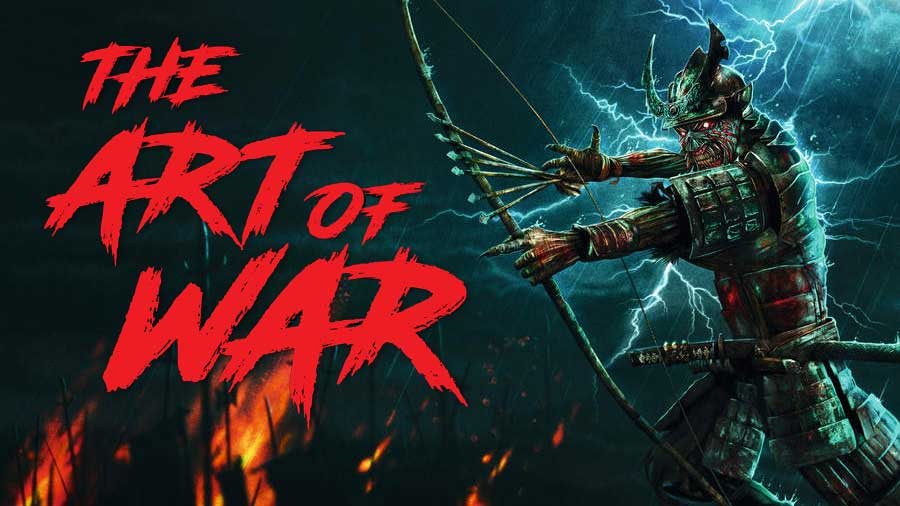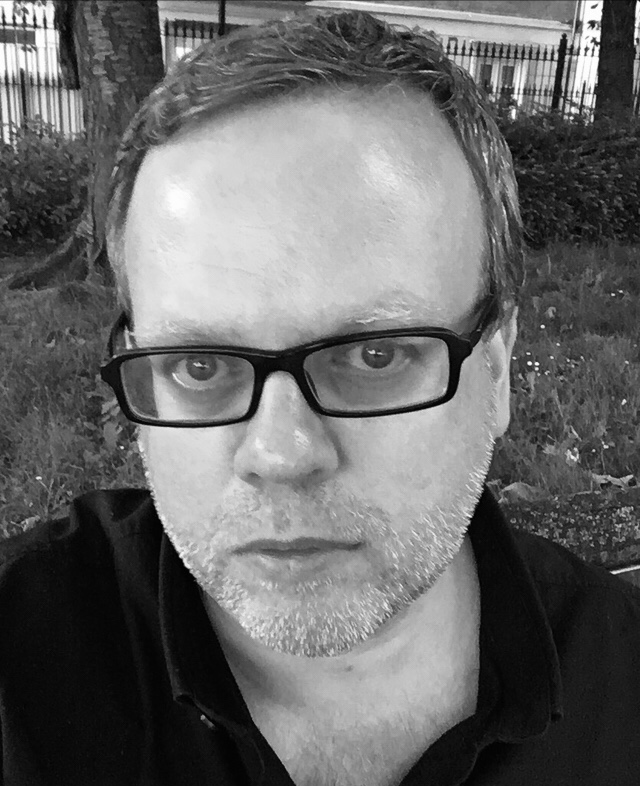Taking care not to be observed by fellow guests at Reading’s Holiday Inn, Rod Smallwood ushered Bruce Dickinson into his hotel room. Earlier that same day – Saturday, August 29, 1981 – Iron Maiden’s manager had observed Samson’s 23-year-old frontman charm a rowdy Reading Rocks crowd eager for the arrival of Angry Anderson’s Aussie yob-rockers Rose Tattoo, and he grudgingly had to concede that the singer had something about him.
As darkness fell on the site, Dickinson, better known to fans of the NWOBHM stalwarts by his stage name Bruce Bruce, was backstage downing celebratory post-gig beers, intending to wander out into the audience to watch former Deep Purple frontman Ian Gillan close out the weekender’s second day with his solo band, when he recognised Iron Maiden’s manager barrelling towards him purposefully.
Aware that his presence backstage would generate some curiosity among the London music business ‘faces’ in attendance, and keen to avoid rumours being sparked, Smallwood asked Dickinson if they could go somewhere quieter to talk.
Once inside his hotel room, he wasted no time in laying his cards on the table: although their increasingly erratic frontman Paul Di’Anno had yet to be informed of this fact, he confided, Iron Maiden were soon to have a vacancy for a new vocalist, and bandleader Steve Harris wanted to know if Dickinson might care to try out for it.
“First of all, you know I’ll get the job, or you wouldn’t ask,” the singer remembers responding. “When I do get the job, and I will, are you prepared for a totally different style, and opinions, and someone who is not going to roll over? If you don’t want that, tell me now and I’ll walk away.”
For once, the louder-than-life Yorkshire-born,Cambridge-educated Smallwood was lost for words.

“I thought it was probably best to go in there with all guns blazing,” Dickinson says today, laughing. That gung-ho energy remains an integral part of the singer’s ebullient character. Arriving for this interview on a bicycle, he’s barely affixed a padlock to secure it before enquiring if anyone from Maiden HQ managed to screenshot the moment when the video for the band’s new single, Writing On The Wall, hit 6,666,666 views on YouTube: “I wasn’t going to sit up into the wee small hours to catch it, but I was hoping someone would,” he says. “Funny shit.”
Warmed by the mid-July afternoon sunshine as he takes a seat outside a West London coffee shop near his home in Chiswick, Dickinson takes a sip of a latte before sharing still-vivid memories of his initial introduction to Britain’s biggest and best-loved metal band 40 years ago. He recalls “a little rehearsal in Hackney” before the East Londoners set off to Scandinavia to complete what would be their final tour with Di’Anno, while clandestine arrangements were made for a test recording session at Battery Studios in north-west London with producer Martin Birch. “You can imagine how many ten-pence pieces were shovelled into public phone boxes to sort everyone’s schedules.
“Ironically, we were booked into the exact same room where I’d just recorded Shock Tactics with Samson,” Dickinson recalls. “We recorded my vocals over some live tracks they’d recorded with Paul – Remember Tomorrow, Twilight Zone, Wrathchild, and I think Prowler – and that was it, job done. UFO were playing Hammersmith Odeon that night, so it was [get] backstage, get pissed, and forty years on here we are.”
That fabulously succinct summation of Iron Maiden’s storied career might be a little light on detail, admittedly, but we’re going to trust that you, our learned and much-valued readers, are at least moderately familiar with their epic journey from junior draughtsman Steve Harris’s Leytonstone bedroom to the stages of the world’s biggest stadiums.
Bruce Dickinson wasn’t on board for the entire trip, of course, having left the band in 1993 to embark on a solo career, but his rejoining in 1999 (along with returning guitarist Adrian Smith) served as a catalyst for Maiden’s current, extraordinary fourth act.
That summer, this writer joined Maiden on the road in New York to see them with Dickinson back at the helm, and was told by him: “I don’t want to equal people’s expectations, I want to exceed them. This band is far better now than it was at its supposed peak. We’re going to be unstoppable.”
That proved to be more than just standard Dickinson swagger. The run of albums Maiden have released since, from 2000’s Brave New World through to 2015’s The Book Of Souls, are arguably superior, pound for pound, to the essential, genre-defining records made by the group’s ‘classic’ line-up between 1982 and 1990.
Senjutsu, their new one, he says without a flicker of self-doubt, “might be the best thing we’ve ever done. “What you’ve done in the past might be great,” he says “but, for me, it shouldn’t be a guarantee of a meal ticket for years to come. I’m not a big one for anniversaries, or nostalgia, I’m more interested in looking forward than looking back. Which is good, because right now there’s a lot for Iron Maiden, and Iron Maiden fans, to look forward to."

'They’re up to something in Paris…’ With these words, an online message board thread started by a Redditor named it-was-zero alerted fellow Headbangers, Earthdogs, Rivet Heads, Hell Rats and Metal Maniacs (as Maiden helpfully categorised their fans in the sleeve-notes for The Number Of The Beast) that photographs and geo-tagged social media posts placed at least three members of the band, plus their long-time studio collaborator Kevin Shirley, in the French capital in the spring of 2019.
Elsewhere online, on a thread titled ‘Iron Maiden studio album 17 rumours and speculations’ on the MaidenFans forum, a poster named Trevoire collated a wealth of international interview quotes, social media postings from Maiden crew members and confirmed sightings by eagle-eyed board members.
Trevoire concluded that the English musicians and their Californian producer had been in residence at Studio Guillaume Tell, the birthplace of Maiden albums The Book Of Souls and Brave New World, and all logic pointed to the imminent release of new Maiden ‘product’, whatever form that might take.
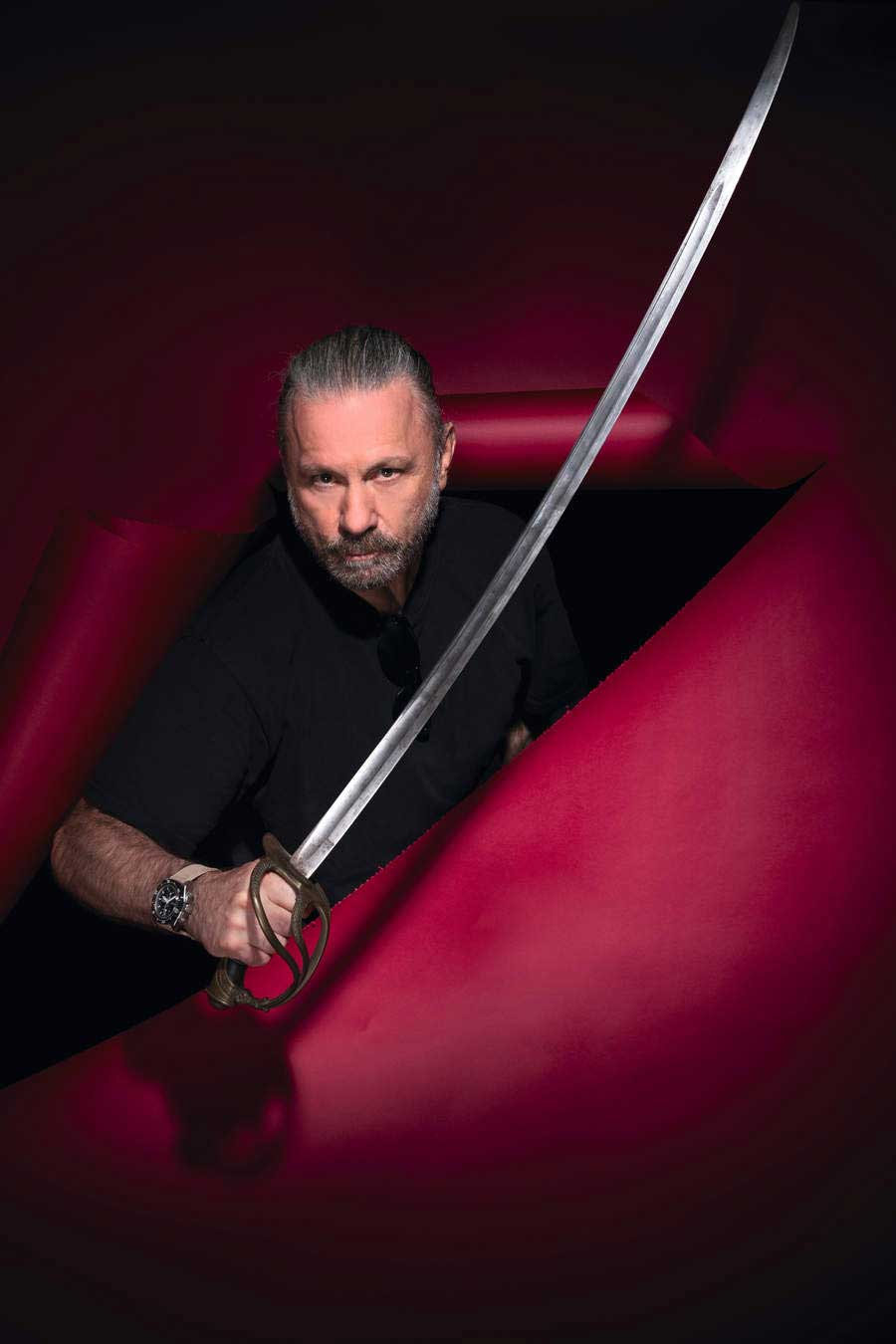
And then the world stopped turning as the rapid spread of a newly discovered, highly infectious and potentially lethal new virus named covid-19 was officially classified as a global pandemic, and Iron Maiden’s meticulously laid plans were, in guitarist Adrian Smith’s words, “knocked sideways”.
As Smith recalls, dialling in from London, the initial plans for what became Iron Maiden’s seventeenth studio album began at the tail end of 2018. He was holidaying on the Turks and Caicos islands, and decided to “pop across” to the Bahamas to pay a visit to Steve Harris to knock around some ideas, “since we were in the same part of the world”.
Smith has the good grace to laugh when he throws out this casual jet-setting anecdote. “Forty years ago I’d have been popping over to his house in Leytonstone from my place in Hackney,” he acknowledges. “But this is our life these days.”
He recalls that the visit led him to show the bassist the outline for a new song he was writing, which would be introduced by booming Japanese kodo drums. In his head, he explained to Harris, he envisaged the dramatic, stirring music as a soundtrack to an epic battle. And with that, the first cornerstone of what would become Senjutsu was laid in place.
When Classic Rock last spoke at length to the members of Iron Maiden, back in 2015, Steve Harris revealed that in the studio during the mixing of The Book Of Souls, he turned to Adrian Smith and said: “If this was our last album, it would be a good one to go out on.”
That was an uncertain time for Maiden, with Bruce Dickinson recovering from cancer, and no one entirely sure how their singer’s health might stand up when the band locked in to their usual rigorous touring patterns. But such concerns were swiftly laid to rest, and when this writer last spoke to Steve Harris, in 2018, during a break in his band’s hugely successful, career-spanning The Legacy Of The Beast tour, Maiden’s redoubtable leader had his eyes fixed firmly on the future.
“When Bruce came back to this band, we all agreed that Maiden wasn’t going to be resting on our history,” he stated. “The Legacy Of The Beast tour is a nice way of telling the old stories in new ways. But I think we’re all already excited at the thought of starting some new stories too.”

Imagine a scenario where, let’s say, your workplace is signing off for the Christmas holidays, and as you reach for your coat your boss sidles over and asks if you still want your job in the new year. Or imagine your significant other pulls out of your embrace on the sofa as the credits roll on season two of Succession, and asks solemnly if you’re up for staying together at least until season three gets a broadcast date, after which you can both see how you feel, see if you fancy committing to another six months, maybe?
How insecure would that make you feel as you climbed into bed at the end of the day? Fortunately, that isn’t how relationships, whether professional or personal, work. Yet, bizarrely, this is how some people seem to imagine how bands of a certain vintage operate; as if Steve Harris walks around Iron Maiden’s dressing room with a notepad and pen at the end of each world tour, earnestly asking each of his bandmates in turn whether they might be up for recording another album, and/or spending another 18 months on the road.
While no one in the band can recall exactly who it was who summoned them to assemble in Paris in March 2019, all six musicians were excited to see what might result from the latest pooling of their talents.
“The only person who was grumpy about it was Nicko [McBrain],” Dickinson divulges mischievously. “He came in and was like: [adopts gruff Nicko-esque voice] ‘What the fuck are we doing ’ere? I fancied an ’oliday!’ But it seemed entirely sensible for us to go in and make an album while we were still hot from the tour and months of playing together.”
“Oh, Bruce said that, did he?” Nicko McBrain says later, affecting indignation, during a phone call from his home in Boca Raton, Florida. “He dropped me in it? Cheeky bugger! I was a bit pooped from touring, I’ll admit, but I was as excited as everyone else about getting stuck into the work. If I was complaining, I was only complaining because it was cold over there in Paris. We did The Final Frontier in the Bahamas, and that would have been more pleasant in March. And eating l’escargot day after day can get a bit samey…”
“But I love that studio, and once we started working I had a blast,” the drummer continues, more seriously. “Honestly, if you were a fly on the wall you wouldn’t believe how much of a laugh we have, because at times it’s hilarious. We’re perfectionists, and it’s not always a giggle when a bunch of opinionated musicians come together with different creative ideas.
"There have been raised voices and slammed doors in the studio in the past. But we love one another and we’ve a lot of respect for one another, and I think you can hear in the album how much we enjoy the dynamic we have."
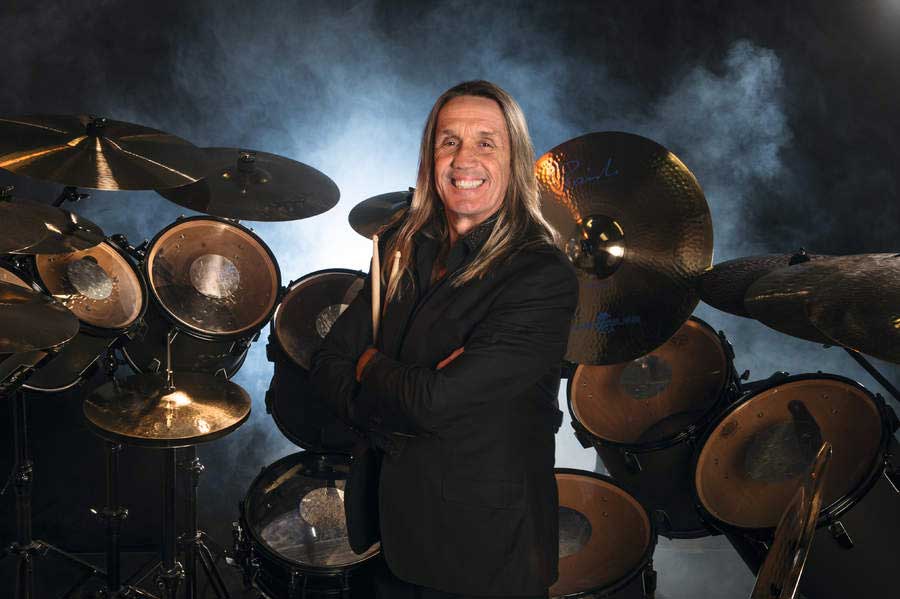
"I love the energy of it,” says Dickinson. “We turn up to the studio with nothing planned, and look at one another and go: ‘Okay, what have you got?’ And then Steve or Adrian reaches into their box of toys and pulls out a riff or half a song, and I go: ‘Alright! I’m liking that! Let’s go!’ We jiggle and tweak things – it’s like a cross between a game of tennis and a juggling match – and we see what comes out. Steve is a lot more controlling about his stuff, it’s fair to say. He might take a riff from Janick [Gers] or Adrian and disappear for three or four days, and then he’ll resurface and go: ‘Right, I’ve three songs ready to go!’ The pressure he puts on himself is phenomenal, and he rises to the = challenge every time.
“When Steve and I sit down to work on the vocals and melody lines, he’ll have the arrangements nailed down very precisely, and he’ll often have, in his mind, a very specific place for every syllable of the lyrics. As a singer, my job is to look for the spaces where I can put in the performance. If you visualise his writing as being like a city skyline, with blocks of skyscrapers, I’m rolling and diving, undulating around that grid, finding my own path. This deep into our career, we know how to work together and read one another.
"Steve is very picky, but I understand his ways. And over the years my voice has got fatter, and a lot more solid in the lower registers. Pus I’ve got new tonalities as I’ve grown older, and that has opened up a lot of new avenues of expression. Which is exciting, for Steve as well as me, I think.”
And if you don’t like what he’s written, what then? Is there a democratic vote on which song ideas get worked up by the band, or…?
“It’s Steve’s band, ultimately, his vision from day one,” says Dickinson. “Have you met Steve Harris? If Steve wants a song on the album, the song is going to be on the album, believe me [laughs].”
As with Speed Of Light from The Book Of Souls and, further back, album-introducing singles 2 Minutes To Midnight and Flight Of Icarus, the most instantly accessible song on Senjutsu, The Writing On The Wall, is a Smith/ Dickinson composition.
“I think writing singles is an under-appreciated art form,” says Smith. “People often see singles as throwaway, trashy pop. But I got into music through Jimi Hendrix singles and Thin Lizzy singles, and as much as I love Deep Purple and Black Sabbath, I appreciate the skill behind a short, sharp, three-minute song as well.”
But for much of its 82 minutes, Senjutsu (a Japanese term relating to the tactics a warrior or army will prepare ahead of combat) is an unashamedly progressive rock album. From the stirring title track – ‘Call to arms all the men far and wide,’ Dickinson sings, warning of ‘invaders from the north’ and bloodthirsty ‘nomads who come from the plains’ – via the brilliant Lost In A Lost World with its extended acoustic opening and soaring female choir, through to the gloriously infectious Gers/ Harris collaboration The Time Machine, it’s the work of a band pushing boundaries and operating at the peak of their powers.
As impressive as the album’s first seven tracks are, however, it’s the three closing, Steve Harris-written tracks, weighing in at, respectively, 10-plus, 12-plus and 11-plus minutes, where Senjutsu leaves its peers in the dust. Death Of The Celts, The Parchment and Hell On Earth are remarkable, thrilling, widescreen encapsulations of everything a metal fan could love about Iron Maiden. Hell On Earth in particular, written before anyone ever heard of or put a name to Covid-19, is a harrowing state-of-the-world address from a band refusing to be beaten down by the darkness that at times can seem overwhelming. “
They’re wonderful pieces of music, aren’t they?” says McBrain. “When I sat down with this album, a few months back, I was absolutely blown away with what we’d done. I think it’s stunning. I think we would all say that Maiden are a live band, and we’re musicians who feed off the energy of an audience, but I think we’ve created something remarkable here. Steve has excelled himself, Bruce sounds amazing, and the drummer ain’t too bad either [laughs].
"But seriously, we can’t wait for people to hear it. It’s been weird sitting on it for so long. Not that we had a choice, really. I look back at the first year of this pandemic as being like a hurricane, which blitzed through the whole world, and now we’re in the midst of a tropical storm, trying to find our feet again. God willing, we’ll have peace and quiet in the world before long, and we can give this album the platform it deserves, and enable it to get the hearing it deserves."
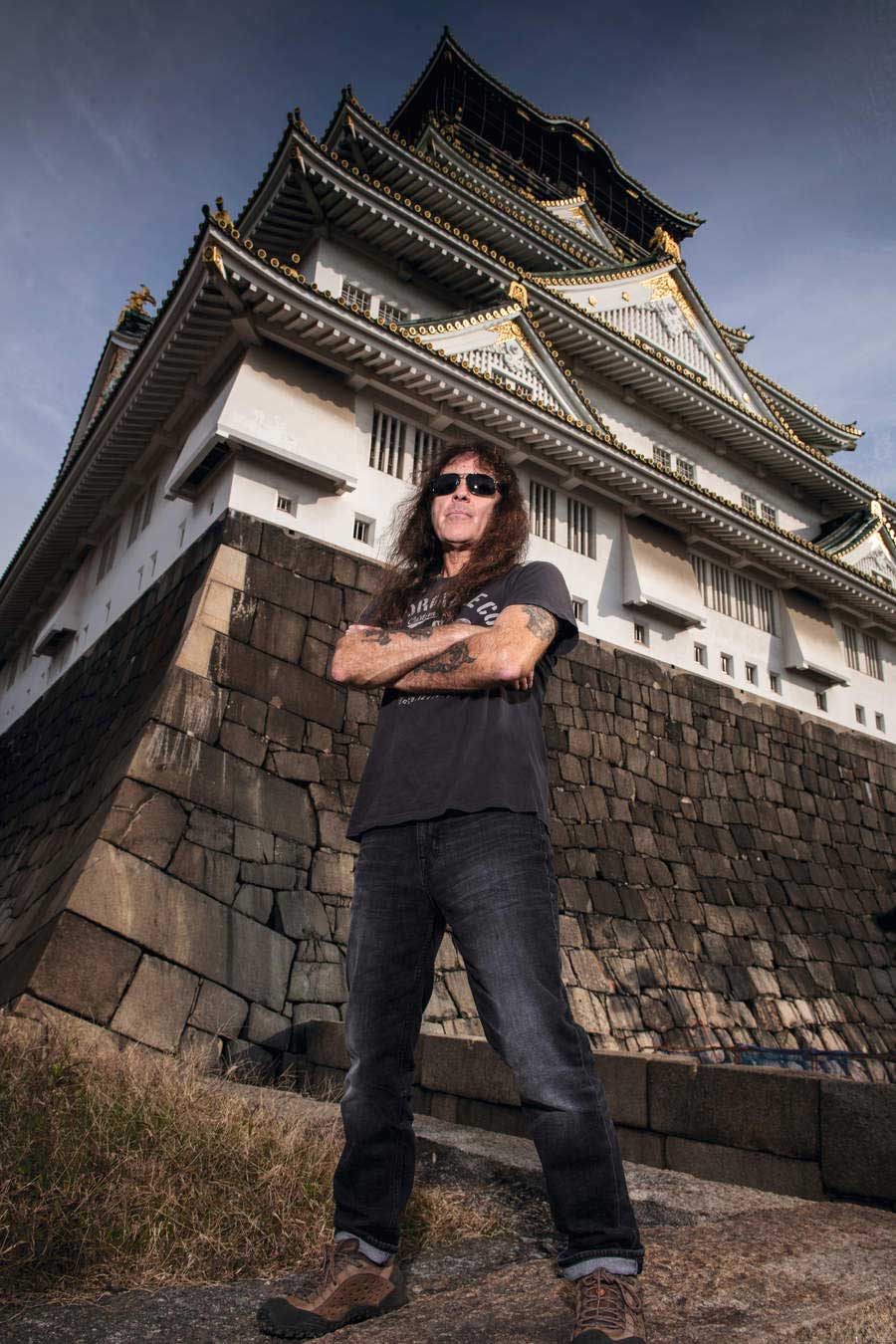
In the early part of 2021, that notion was also consuming Bruce Dickinson. Asked what he’s been up to while waiting out the pandemic, he laughs and says: “Medical improvements… prosthetics.”
Having snapped his Achilles tendon while fencing in Paris during the recording of Senjutsu, he also had to have a hip replacement operation in October. Resting up in Paris, after “watching everything watchable on Netflix” he began to mentally piece together a storyboard for a promotional video for Senjutsu’s first single, The Writing On The Wall, a track that would do justice to the album’s sense of scale and ambition.
Mindful that restrictions imposed to combat the transmission of Covid would make it impossible to assemble the band on a video set – with Harris in the Bahamas, McBrain in Florida, Dave Murray in Hawaii, Smith in London and Janick Gers in Newcastle – Dickinson hit on the concept of an epic animated video for it.
“I said to Rod: ‘Don’t you think it’s time we came out of the blocks with something a bit special in terms of a video?’” he recalls. “I told him about Rammstein’s Deutschland video – which transcends the idea of a music promo and becomes a piece of filmic art – and said: ‘I’m not suggesting we do the same as Rammstein, but we could try to have something with a similar impact in our world.’
"I’m not sure that Rod ever watched the Rammstein video – he doesn’t have much interest in anything that’s: a) not Maiden, or b) made after 1975 – but he gave me the go-ahead to come up with some ideas. So I started piecing together ideas based on biblical references, themed around the idea of Belshazzar’s Feast, aka the story of The Writing On The Wall, from the Book Of Daniel.
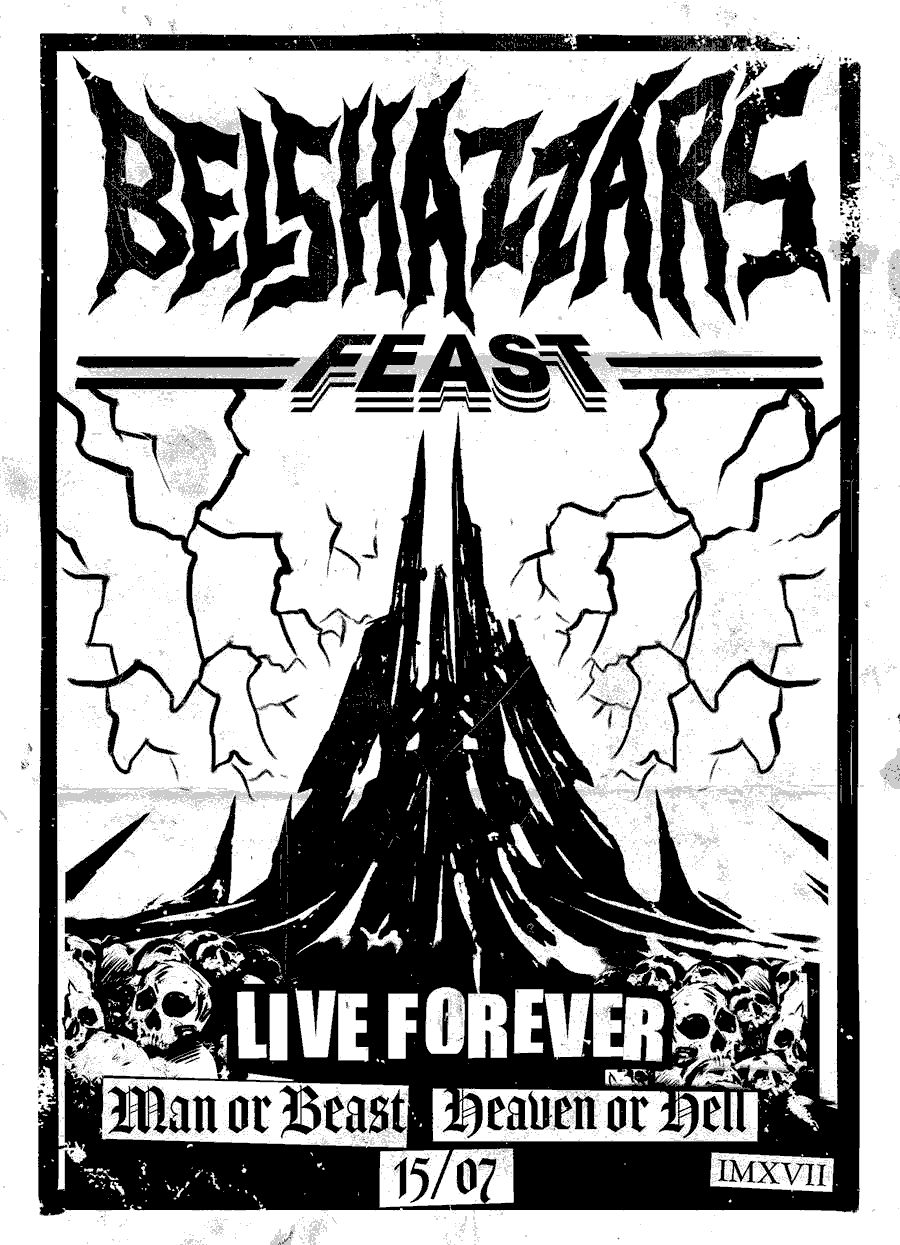
“I was thinking about how our whole political culture is fucked, as is the world, with the rich getting richer and the have-nots having even less, and I was thinking about how we’d have to destroy everything and start the world anew. From watching Netflix, specifically Sons Of Anarchy, I suddenly had this vision of ‘The Four Bikers Of The Apocalypse’, with each one being Eddie. And then thinking about the biblical creation story, I was thinking about Adam and Eve, and then Eddie being the serpent tempting them. And then I had a story to work with.”
Collaborating with animators Mark Andrews and Andrew Gordon, formerly of Pixar (the animation studio behind Toy Story and Finding Nemo, among others), both of them devoted Maiden fans, the result is a visual treat, with a host of subtle references to Iron Maiden’s storied past. So thrilled was everyone with the result that they almost overlooked one tiny detail: the reason the main character is at the feast in the first place.
“The Maiden fan was supposed to be clutching this invite to Belshazzar’s Feast. That’s what lured him to the desert in the first place,” Dickinson explains. “Otherwise why is everyone here? But they forgot to put it in. I said: ‘Where’s the invite? It doesn’t make sense without it.’ People were like: ‘Oh, it’s kinda too obvious with that included.’ Is it fuck! So then we created the invite as like an old-school rave flyer, black and white. And once we had that, an idea grew about how we could tie all this in to a cryptic way to announce the album.”
On the weekend of this summer’s Download Pilot festival in June, mysterious posters/flyers with the words ‘Belshazzar’s Feast’ were spotted on walls around the festival site. By pure coincidence, Iron Maiden super-fan Frank Turner was interviewed on-site wearing a T-shirt displaying the same image.
On June 28, appearing on Sky News to complain about the British government’s dismissal of UK music industry concerns about the impact of Brexit on touring artists and the ecosystem surrounding live music, Bruce Dickinson was swearing the same T-shirt.
Soon enough, Maiden promised a ‘reveal’ on July 15. At which point the video for The Writing On The Wall was released, and Maiden had the attention of every rock fan in the world once again. Almost as if they’d planned it this way from the start. Who says you can’t teach old dogs new tricks?
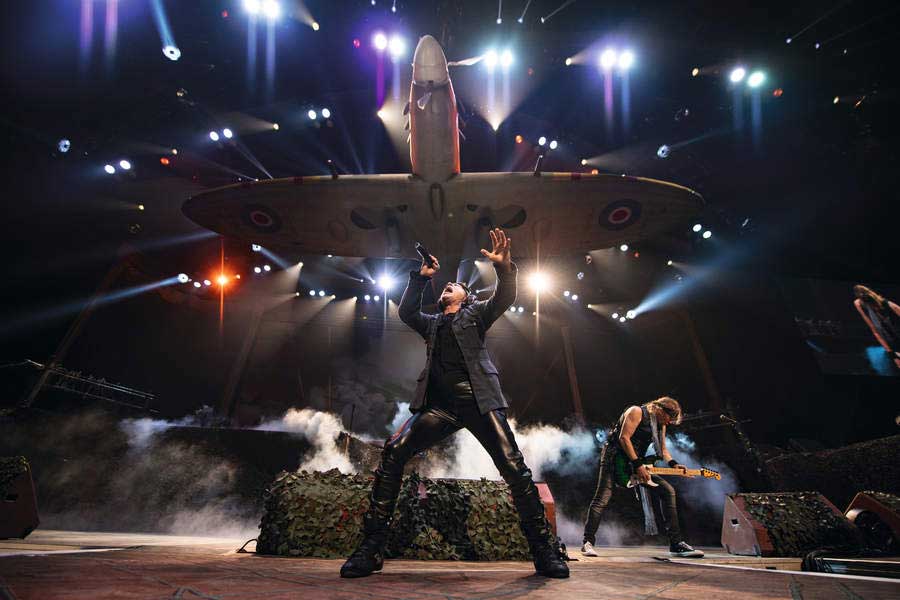
“I have to say, listening to the album now, I’m blown away by it,” says Adrian Smith. “When I’ve listened to albums we’ve made in the past, the memories are still raw, and I end up picking up on tiny things I wish had been done differently. But having had a year or more to live with the album, hearing it afresh is thrilling. The fact that this band can continue to surprise us all is a huge tribute to what we do.
“When I joined this band I was a boy. I may have seemed like a man, but really I knew nothing. You could probably say the same for all of us. And we all gave everything to Maiden. For years there was nothing in our lives but Maiden. It was full-on. And I can’t pretend it didn’t get on top of me at times. Now I can step back and appreciate everything more and appreciate everything we’ve built together. All the work we put in back then is the foundation of where we are and what we do today. It’s a privilege to do this, but that work ethic, that legacy, allows Senjutsu to exist in 2021, and allows Maiden to exist in 2021.”
“When they hear this album, people are going to go: ‘Fuck me!’” says Dickinson. “Every song is Maiden at the top of our game. Every song could be a live favourite. We haven’t played a Maiden album from start to finish since [2006’s] A Matter Of Life And Death, but this album is so good that it could warrant being played in its entirety. Obviously we haven’t finished the Legacy tour yet, but the thought of taking this album on the road is exciting to all of us. Making it come alive on stage, with all its time changes and shifts of tone and mood, is going to be a challenge.
"But if I didn’t relish a challenge I wouldn’t have joined this band in the first place. No one is mellowing with age, we’re all committed to this, and taking on the world again after everything being on pause is going to be one hell of an adventure. We look forward to seeing you there."
Senjutsu is out now via Parlophone.
